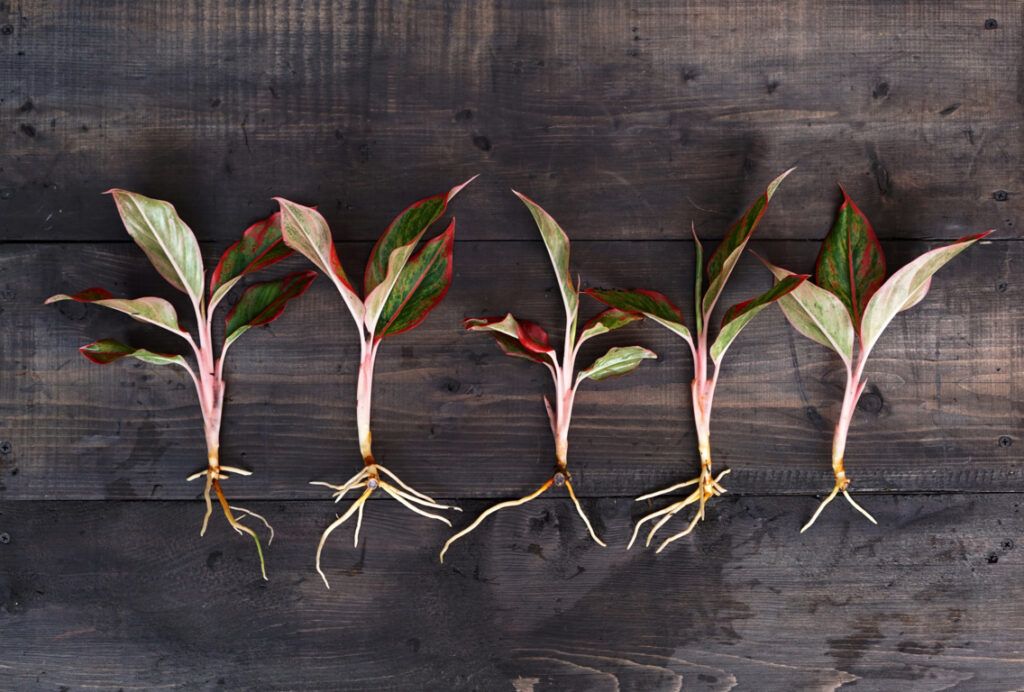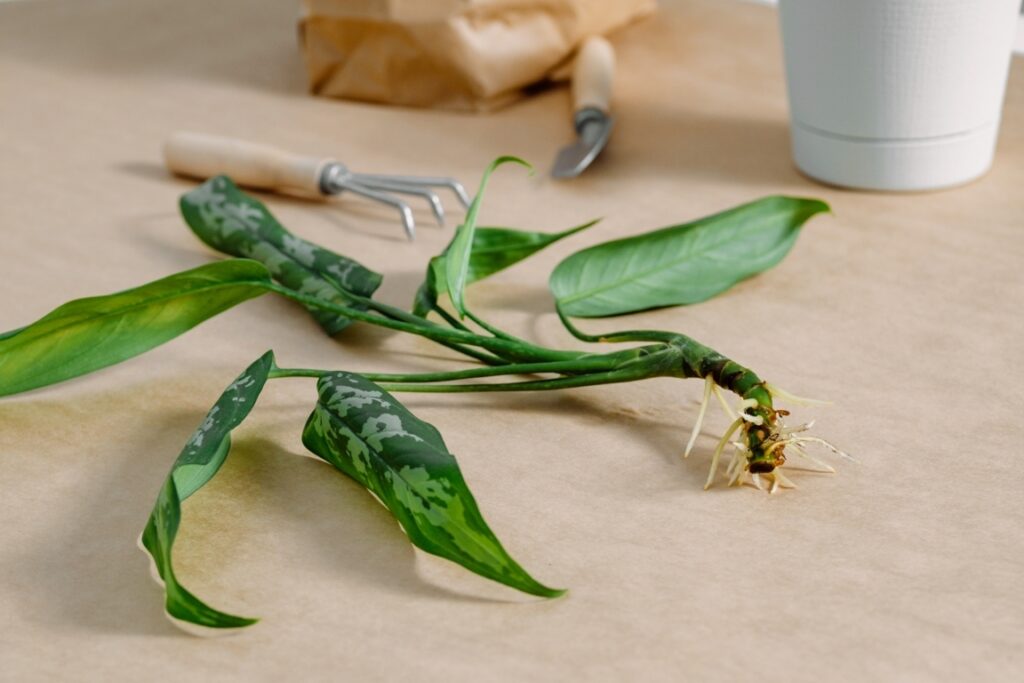
The Chinese evergreen is one of the most popular houseplants around. Its lush, deep green foliage and its ability to thrive in low-light conditions make it an ideal choice for any indoor gardener. If you have a Chinese evergreen that has become too large for your space, or you’d like more plants, you can easily divide it..
Let’s learn how to propagate Chinese evergreen plants.
Aglaonema (Chinese Evergreen)

Chinese evergreen (Aglaonema) is an easy-to-care-for houseplant that has been popular in China for centuries. Despite its common name, it is not actually related to the evergreen trees found in North America or Europe. Instead, the Chinese evergreen is a tropical perennial plant with vibrant foliage that can grow up to three feet tall and wide.
There are more than 50 varieties of Chinese evergreen! Varieties range to those with solid green leaves to those featuring stripes and variegated markings. It is known to be quite resilient, making it one of the most popular indoor plants for beginners.
How to Propagate Aglaonema (Chinese Evergreen) – The Basic Method

Propagating a Chinese evergreen (Aglaonema) is a great way to expand your collection of these popular houseplants. You can easily propagate your Aglaonema at home with simple steps and the right tools.
Tools required:
- Sharp knife or pruning shears
- Rooting hormone powder
- Clean containers with drainage holes
- Potting soil, peat moss, or perlite
Step 1: Choose healthy plant material for propagation
The best way to ensure success when propagating a Chinese evergreen is to use healthy plant material. Look for Aglaonema stems with multiple leaves and minimal damage from pests or disease.
Step 2: Cut the stem
It is essential to use clean, sharp pruners or a knife when cutting your stem. Ensure the cut is straight at an angle just below a node (a bump on the stem where leaves, stems, and roots grow). Cut about 6-inch stems.
Step 3: Add rooting hormone powder
Before planting the cutting, gently dip the end in rooting hormone powder to promote faster root growth. This step is optional, but recommended for achieving faster results.
Step 4: Plant in well-draining soil
Fill a clean pot with well-draining soil or a mixture of peat moss and perlite. Make sure the planting mix is moist before inserting the cutting into it. Plant the cutting 1 to 2 inches deep.
Step 5: Provide humidity and light
Aglaonema plants need both humidity and light to thrive, so it is vital to provide an environment that can meet the plant’s needs. The newly planted cuttings should be kept in bright, indirect light and high humidity levels. Keep the soil moist but not soggy.
Step 6: Monitor the progress
Monitor the new cuttings to ensure they get enough humidity and light. Watch for signs of root growth, such as small white nodules beginning to form along the stem. After a few weeks, you should see green shoots emerging from the soil.
Step 7: Transplant to a larger container
Once your Aglaonema cuttings have established healthy root systems and green growth, it is time to transplant them into larger containers. Choose pots with drainage holes and a quality potting mix that includes organic matter for a healthy soil structure.
Chinese evergreen care after propagation
Once your Aglaonema cuttings have been transplanted, they will need regular care and maintenance to stay healthy and happy. Chinese evergreen plants prefer bright indirect light, warm temperatures between 65-75°F (18-24°C), and high humidity levels.
It is crucial to keep the soil moist but not soggy, as this can lead to root rot. Fertilize your Chinese evergreen every two to four weeks during its growing season with a diluted liquid fertilizer for the best results.
If you follow these steps, you’ll have lots of healthy and vibrant Aglaonema plants to brighten up your home or office!
How to Propagate Aglaonema (Chinese Evergreen) Using the Division Method

The Chinese evergreen, is an attractive houseplant with beautiful foliage and low-maintenance care. Being so popular, it’s no surprise that many people want to learn how to propagate Chinese evergreen.
The division method is one of the best ways to propagate this stunning houseplant. This propagation method involves dividing the existing root system and replanting each new section into a separate pot. Read on as we explain how to do this step-by-step.
Step 1: Preparing for division
The best time to divide your aglaonema is when you repot it in the spring. Start by carefully removing the plant from its container and checking for signs of damage or disease to the root ball.
Step 2: Cutting away damaged roots
Using a sharp, sterile knife, cut away any damaged or diseased roots that you find, making sure not to damage any healthy ones.
Step 3: Dividing the roots
Once you’ve removed all of the damaged roots, gently tease the remaining root system apart with your fingers. Separate it into two or more sections, depending on the size and health of the original plant.
Step 4: Planting each section
Each section should now be planted in its own container, using a similar potting mix that you used for the original plant. Place your divisions in bright, indirect sunlight and moisten the soil.
Step 5: Caring for your Aglaonema after propagation
Avoid stressing your propagated plants further during their first few weeks, as they might suffer from transplant shock. Keep the soil moist and provide plenty of bright, indirect light. With this method, you’ll soon have a healthy and thriving new Aglaonema through propagation!
Propagating Aglaonema, or Chinese evergreen, is a great way to increase your plant collection without spending any money. You can use the basic cuttings method, or the division method, to propagate this stunning houseplant easily.
Keep in mind that your new Aglaonema cuttings will need extra care and attention during their first few weeks as they adjust to their new environment. With the right care and attention, you’ll soon see them thriving.



